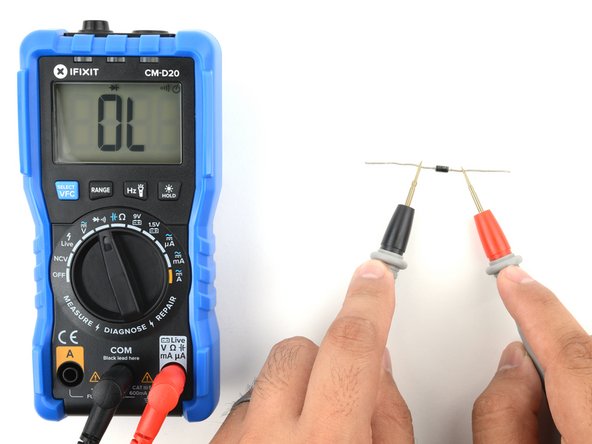crwdns2935425:012crwdne2935425:0
crwdns2931653:012crwdne2931653:0






How to test diodes and LEDs
-
Touch the red probe to the anode, "input", or unmarked end of the diode. If you're testing an LED, touch the longer lead.
-
Touch the black probe to the cathode, "output", or marked end of the diode. If you're testing an LED, touch the shorter lead (or the lead next to the flat side of the LED).
-
Reverse the probes so they touch the opposite ends of the diode.
crwdns2944171:0crwdnd2944171:0crwdnd2944171:0crwdnd2944171:0crwdne2944171:0